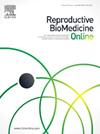Oocyte development: it's all about quality
IF 3.7
2区 医学
Q1 OBSTETRICS & GYNECOLOGY
引用次数: 0
Abstract
Mammalian fertility depends on the production of an oocyte capable of fertilization and supporting early embryo development. This requires both cytoplasmic and nuclear, i.e. chromosomal, competence, processes that were initiated decades prior to ovulation. Current demographic changes with delayed motherhood are increasingly in conflict with these biological processes. This brief review highlights the key stages in oocyte development, as well as recent findings that continue to inform on how the oocyte is able to maintain function over such a prolonged period. These include minimizing oocyte damage caused by the production of reactive oxygen species, the importance of intercellular communication with the surrounding somatic cells, and the molecular mechanisms that underpin the fidelity of chromosome cohesion and then separation at the resumption of meiosis. Some of these are already approaching clinical testing and interventions, with new approaches in the coming years potentially being able to ‘put back the clock’ to improve oocyte quality.
卵母细胞发育:质量是关键
哺乳动物的生育能力取决于能够受精和支持早期胚胎发育的卵母细胞的产生。这需要细胞质和细胞核,即染色体,能力,在排卵前几十年开始的过程。目前的人口变化与延迟生育越来越多地与这些生物过程相冲突。这篇简短的综述强调了卵母细胞发育的关键阶段,以及最近的发现,这些发现继续告诉我们卵母细胞如何能够在如此长时间内保持功能。其中包括最小化活性氧产生对卵母细胞造成的损伤,细胞间与周围体细胞交流的重要性,以及在减数分裂恢复时支持染色体凝聚和分离的保真性的分子机制。其中一些已经接近临床测试和干预,未来几年的新方法可能会“让时间倒流”,以提高卵母细胞的质量。
本文章由计算机程序翻译,如有差异,请以英文原文为准。
求助全文
约1分钟内获得全文
求助全文
来源期刊

Reproductive biomedicine online
医学-妇产科学
CiteScore
7.20
自引率
7.50%
发文量
391
审稿时长
50 days
期刊介绍:
Reproductive BioMedicine Online covers the formation, growth and differentiation of the human embryo. It is intended to bring to public attention new research on biological and clinical research on human reproduction and the human embryo including relevant studies on animals. It is published by a group of scientists and clinicians working in these fields of study. Its audience comprises researchers, clinicians, practitioners, academics and patients.
Context:
The period of human embryonic growth covered is between the formation of the primordial germ cells in the fetus until mid-pregnancy. High quality research on lower animals is included if it helps to clarify the human situation. Studies progressing to birth and later are published if they have a direct bearing on events in the earlier stages of pregnancy.
 求助内容:
求助内容: 应助结果提醒方式:
应助结果提醒方式:


